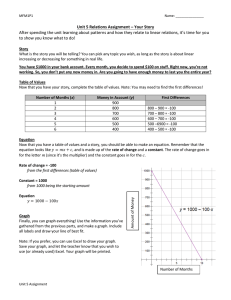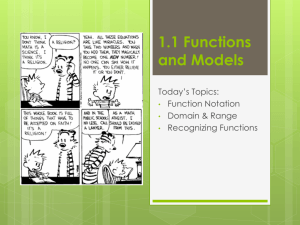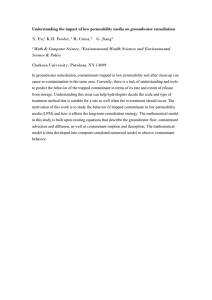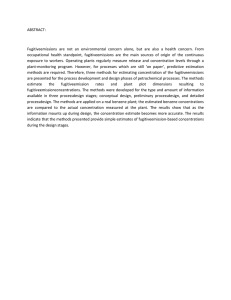Recent Development of Cost-effective In-situ Bio-remediation in the Oilfield
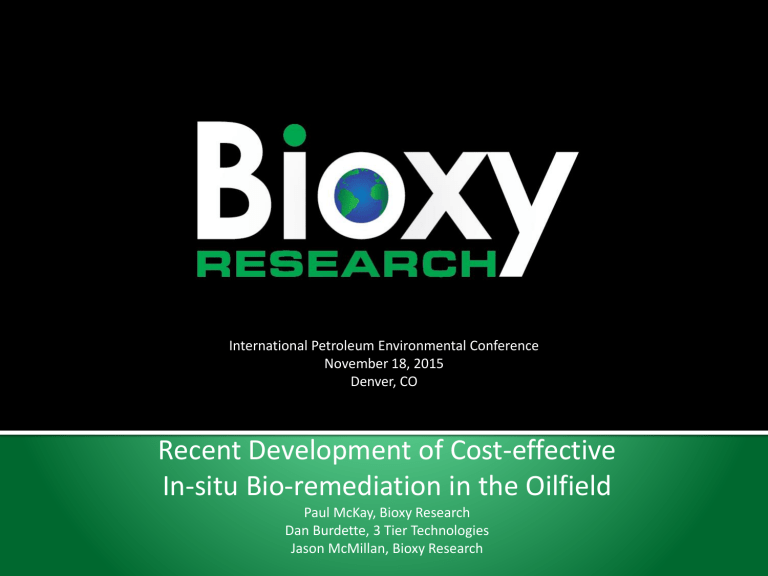
International Petroleum Environmental Conference
November 18, 2015
Denver, CO
Recent Development of Cost-effective
In-situ Bio-remediation in the Oilfield
Paul McKay, Bioxy Research
Dan Burdette, 3 Tier Technologies
Jason McMillan, Bioxy Research
Discussion of the Technology
Hydrocarbon Remediation Case Studies
Bio-Pile – Land Farming
In-situ Soil Remediation
Spill Response
Oilfield Wastewater Treatment
Brine Spill Remediation Case Studies
China Saline Soil
Oklahoma Brine Spills
Cost Comparison
Core Technology
Microbial Component
Enzymatic Component
Originally…
Designed to immobilize heavy metals and prevent uptake into plants
Raw feedstock 48.6% carbon, 30.9% oxygen, 2.9% hydrogen, 1.1% nitrogen
Ion exchange reduced ash content
Contains an abundance of hydroxyl and phenolic groups which are key to metal complexation
Also applied to radionuclides in soil
Now - The Advanced Organic Polymer (AOP)
Patent-pending polymer manipulation process that unfurls the long-chained molecule and releases activated carbon, fulvic acid and the hydroxyl/phenolic groups
Enhanced with polyelectrolytes
Variations developed for specific applications (specific heavy metals salts, H2S, facilitating microbe- and enzyme-based processes)
Specialized - Microbes selected for specific contaminant
Stable - Sugar-based solution preserves microbes in dormant state for up to 2 years and stimulates exponential growth when activated
Tolerant to most contaminants due to the
AOP except chlorine
pH tolerant - (4-10)
Contaminant-specific enzyme package
19 of the 20 most common amino acids
Catalyzes the hydrolysis of complex molecules
Decomposes hydrocarbon chains into more digestible components for microbes
Also effective in H2S abatement
Careful protein selection for thermal stability
Must have contact with the contaminant
Residence Time – Although results are typically seen in 30-90 days, longer is better; contingent on rate, methodology, etc.
Capillary movement (wicking) can occur for sodium chlorides in arid environments; so maintenance dosage could be required
Extreme acid events can break the biopolymer bonds pH must be between 4 and 10 (pretreatment?)
After 14 years, no vegetation was growing on this oilfield waste landfarm
Need – Establish effective hydrocarbon reductions immediately
30-day results
Treated area grew vegetation
Sampling validated 65% reductions in all hydrocarbon levels.
Entire site has been remediated in less than one year.
High Clay Content Soils with 2% by weight each – crude oil, diesel, & gasoline (w/10% ethanol)
Need – Determine reduction potential and time required on high clay soils. Benzene was primary target. Site is located in Nova Scotia Canada with 6 month season.
Result – Benzene eliminated in 30 days with significant overall reductions in 60 days. Trial completed after 47 Day results. Entire site treated in August, 100% Benzene, Toluene,
Ethylbenzene, and Xylene reduction after 30 days, all other BTEX ranges reducing faster in full scale treatment.
Sample Description
Date Sampled
Parameter
Benzene
Toluene
Ethylbenzene
Xylene (Total)
C6-C10 (less BTEX)
>C10-C16 Hydrocarbons
>C16-C21 Hydrocarbons
>C21-C32 Hydrocarbons
Modified TPH (Tier 1)
Unit mg/kg mg/kg mg/kg mg/kg mg/kg mg/kg mg/kg mg/kg mg/kg
G / S
Untreated 1 Treated 2T Treated 3T Treated 4T Change
04/17/2015 04/29/2015 05/18/2015 06/02/2015
RDL 6494946
0.03
13.4
6494949
1.08
6535218
<0.03
6638857
<0.03
-100%
15
15
15
20
0.04
0.03
0.05
3
858
270
1720
4560
6540
5960
4070
21100
192
122
882
2340
4620
6570
5090
18600
2.28
7.98
71.2
17
4640
7180
8220
20100
<0.04
<0.03
<0.05
5
2250
5590
7490
15300
-100%
-100%
-100%
-99.80%
-66.60%
-6.20%
84%
-27.50%
Return to Baseline at C32
% Moisture
Isobutylbenzene - VPH n-Dotriacontane - EPH
%
%
%
Y
14
118
125
Y
18
126
136
Y
29
96
79
Y
11
66
N/A
-44.10%
-100%
Petroleum spills occur daily at refineries, tank farms, well heads, and exploration sites. These results are from a refinery that had spills both inside the refinery and at the loading heads.
Need – Immediate remediation and cleanup of two different spills
Result – 100% cleanup of gasoline in 30 days and significant reductions on the crude oil.
Benzene
Toluene
Ethylbenzene
Total Xylene
Method
8021B
8021B
8021B
8021B
CRUDE OIL
8/31/2009 9/23/2009 10/2/2009
Result Result Result
15
54
0.15
2.5
0.13
1.8
33
190
3.8
68
4.4
45
Benzene
Toluene
Ethylbenzene
Total Xylene
Change
-99.10%
-96.70%
-86.70%
-76.30%
GASOLINE
8/31/2009 9/23/2009 10/2/2009
Method Result Result Result
8021B
8021B
8021B
8021B
140
2000
810
5500
BDL
BDL
0.52
7.6
BDL
BDL
0.64
8.4
Change
-100%
-100%
-99.90%
-99.80%
EXPERIMENT SUMMARY
A lab-scale test was performed on real-world oilfield wastewater sample
Very difficult waste stream.
Some of the best and fastest hydrocarbon remediation results we have ever recorded.
Field results expected to be even better in larger biological system.
DRILLING MUD TREATMENT RESULTS
Initial Final % Reduction No. of Days
TPH % 0.98
COD mg/l 42,777.50
BOD mg/l 10,532.00
Total C g/kg 12.56
NH3-N mg/l
SS mg/l
10.34
2,135.00
0.10
2,940.8
915
1.26
0.01
944
90%
93%
91%
90%
100%
56%
16
23
23
16
9
23
12
Bio-Pile Location – Site land-locked for growth
Need – Turn material faster, save on treatment cost
Result – 33% faster turn-around time,
$2.50 per cubic meter savings (28%),
31% increase in annual volume with same footprint.
Parameter
Benzene
Toluene
Ethylbenzene
Xylene Mixture (Total)
C6 – C10 (F1)
C6 – C10 (F1 minus BTEX)
C>10 – C16 (F2)
C>16 – C34 (F3)
C>34 – C50 (F4)
Moisture Content
Unit ug/g ug/g ug/g ug/g ug/g ug/g ug/g ug/g ug/g
%
RDL
0.02
0.08
0.05
0.05
5
5
10
10
50
0.01
July 9 July 23 Treated
Level Treated Change
0.13 N/A 100.00%
32 N/A 100.00%
11 N/A 100.00%
100 N/A 100.00%
440 N/A 100.00%
300 N/A 100.00%
5900 19 99.67%
4700 130 97.23%
<50 <50
11.3 6.1 46.01%
Sodicity
Creates
Compaction
And Dispersion
Salinity
Creates
Osmotic
Pressure
Issues
Reversing Compaction
The two biopolymers and calcium bind the sodium cations and return the repelling negative charges to the clay platelets
Osmotic Pressure
The binding of the salts returns the plant’s root system to an isotonic state and allows water to penetrate the cell walls readily
We have found that a blend of both ionic and non-ionic biopolymers plus calcium is ideal to battle the effects of brine.
Salt-contaminated Field (6500 ppm)
Never supported crops prior to treatment
10 days after SaltBinder treatment and winter wheat planting
Location and Date: Oklahoma; July 2013
Contaminant: Produced water (brine)
Impact Area: .58 acres by 8” deep
Sample Analysis: Environmental Testing, Inc. (OKC)
Testing Methods:
Total Soluble Salts: SM 2520A
Chlorides: EPA 300.0
Contaminant
Total Soluble Salts (ppm)
Chlorides (ppm)
Conductivity (um/cm)
Initial
13,900
6080
21,545
30-day
2920
1080
4536
60-day
1960
674
1235
+/-
-85.9%
-88.9%
-94.3%
Location and Date: Oklahoma; July 2013
Contaminant: Produced water (brine)
Impact Area: 1.74 acres by 8” deep
Sample Analysis: Environmental Testing, Inc. (OKC)
Testing Methods:
Total Soluble Salts: SM 2520A
Chlorides: EPA 300.0
Contaminant
Total Soluble Salts (ppm)
Chlorides (ppm)
Conductivity (um/cm)
Initial
15,000
6410
36,540
30-day
3530
1170
5472
60-day
3990
1410
6240
+/-
-73.4%
-78.0%
-82.9%
Dig & Haul - Rates vary dramatically by region and disposal costs. Cost for excavation, hauling, tipping fees, and soil replacement range from $55 to $175 per
cubic yard. Client may still have liability issue with disposed material.
Bioxy In-Situ Soil Remediation cost per cubic
yard: Product Cost - $8.00 to $17.85
Application (Labor and Equip.) $2.50 to $7.50
Excavation (if required) - $2.50 to $7.50
Average total cost is $10.50 to $33.00 per cubic yard.
Factors That Influence Cost – Loading, age of spill, time required to complete, method of application, soil conditions, site access, region, regulatory standard, and testing requirements.
www.bioxyresearch.com
info@bioxyresearch.com
